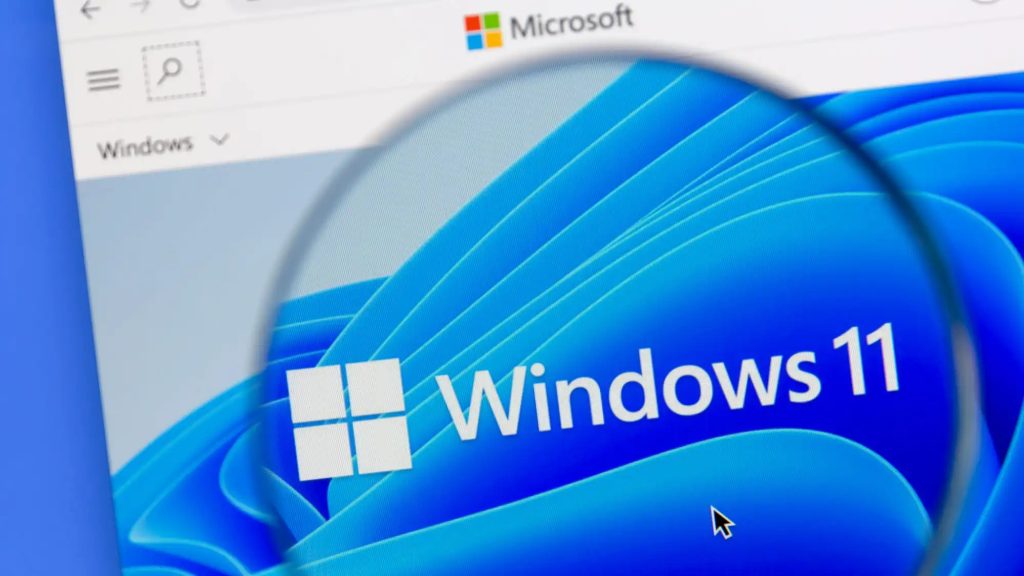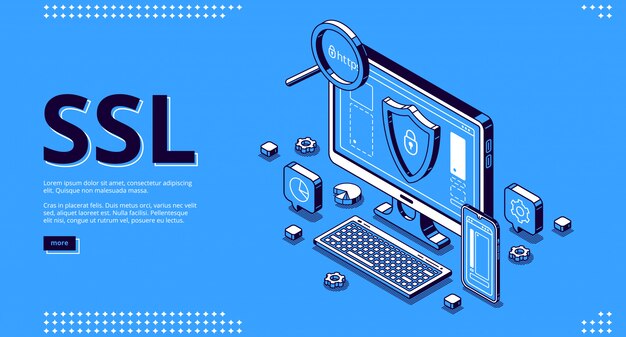Why Did My Apps Disappear? Common Reasons and How to Fix It

Imagine this you unleash your smartphone or laptop, ready to check an app you use every day, but suddenly it’s gone. No icon, no roadway, no sign of it. fear sets in why did my apps disappear? Did I cancel it? Did my phone glitch? Is it gone ever? Do n’t worry — you’re not alone. numerous people face this issue, and in utmost cases, the apps have n’t fully dissolved. There are several reasons why apps vanish, ranging from simple settings changes to specialized glitches. The good news? With the right way, you can generally restore them in twinkles. In this composition, we’ll explore the most common reasons apps vanish and the stylish fixes to get them back. Why Do Apps Disappear Apps don’t just vanish without a cause. Let’s break down the most frequent reasons. 1. Accidental omission On both Android and iOS, apps can be uninstalled in just a many gates. A long press followed by opting “ Remove ” or “ Uninstall ” may have deleted your app without you realizing it. Example :You might have been rearranging your home screen and accidentally deleted an app. 2. Hidden from Home Screen numerous druggies mistake a retired app for a deleted one. On iPhones, apps can be hidden in the App Library, while on Android, they may only appear in the App Hole. Tip Just because the app icon isn’t on your home screen doesn’t mean the app is gone. 3. Restrictions or Maternal Controls still, academy, or plant restrictions, If your device is managed by maternal controls. illustration An app marked as “ unhappy ” under restrictions may vanish until warrants are changed. 4. System Updates or Software Bugs occasionally, after streamlining your device’s operating system, apps may temporarily vanish. Glitches and comity issues are fairly common during updates. Example After upgrading to a new iOS interpretation, you may find some apps missing because they’re not yet streamlined to support the rearmost software. 5. impaired Apps( Android Only) On Android bias, system apps can be impaired rather of deleted. When this happens, they evaporate from the home screen and app hole but still live in settings. 6. storehouse or SD Card Problems still, the apps may vanish from your device, If you store apps on an SD card and the card is removed or corrupted. 7. Malware or Security Interference In rare cases, apps may vanish due to security software or malware. Antivirus programs or the system itself might remove apps supposed unsafe. How to Fix fading Apps Now that you know the possible causes, then’s how to bring your apps back ✅ 1. Check Your App Hole or Library On Android, swipe up to open the app hole. On iOS, swipe left until you reach the App Library. still, drag it back to the home screen, If the app is there. ✅ 2. Search for the App Use your phone’s hunt function. However, it has n’t been deleted it’s just hidden, If the app appears in the results. ✅ 3. Reinstall the App still, simply head to the Google Play Store or Apple App Store and reinstall it, If the app was uninstalled. ✅ 4. Check Restrictions On iPhone Go to Settings → Screen Time → Content & sequestration Restrictions. On Android Navigate to Settings → Apps → impaired. Re-enable or allow the app if restrictions are blocking it. ✅ 5. renew Your Device occasionally, a quick reboot is each it takes to fix temporary glitches. ✅ 6. Check Storage or SD Card Make sure your SD card is duly fitted and functioning. However, reinserting the card should bring them back, If apps were stored on it. ✅ 7. Update Your Software Install the rearmost updates for your operating system. Updates frequently include bug fixes that could resolve the missing apps issue. ✅ 8. Run a Security overlook still, run an antivirus or security check up, If you suspect malware. Removing vicious lines can restore apps removed by the system. precluding Apps from fading Then are a many tips to avoid this issue in the unborn Double- check before uninstalling – Confirm before removing apps. Keep your gilches streamlined – Updates frequently fix fading app glitches. Back up your device – Regular backups help data and app loss. Avoid third- party app stores – They may host unstable or unsafe apps. Final studies Chancing that your apps have faded can be frustrating, but the cause is generally simple accidental omission, hidden settings, or temporary bugs. In utmost cases, restoring your apps is as easy as searching your library, reinstalling from the app store, or conforming restrictions. still, it could point to deeper software issues or malware, in which case streamlining your device or running a checkup is the stylish step forward, If the problem persists. So, the coming time you ask yourself, “ Why did my apps vanish? ” — you’ll know exactly where to look and how to fix it. Also Read: How to Fix Latency Issues on Your PC: A Complete Guide
Seamless Security Updates: Windows 11’s Latest Innovation

Unlocking performance and comfort in Patch management Within the dynamic landscape of cybersecurity, fast reaction and seamless updates are paramount. Microsoft’s windows 11, ever at the vanguard of innovation, is poised to introduce a groundbreaking feature that promises to revolutionize the hot patching technique: the ability to put in security hot patching with out necessitating a system reboot. In this weblog, we delve into the significance of this development and its implications for users global. The task: Balancing safety and Disruption Historically, installing protection patches on home windows structures has frequently required a mandatory reboot. Even as these updates are critical for shielding towards emerging threats, the accompanying downtime can be disruptive, specially in organisation environments in which uptime is vital. Gadget reboots not only interrupt workflow but also pose capability dangers of facts loss and productiveness setbacks. Windows 11’s answer: Seamless safety Updates Recognizing the need for a greater streamlined method, home windows 11 is set to introduce a sport-changing function that lets in security patches to be set up without triggering a reboot. This modern functionality ensures that vital updates can be carried out promptly and effectively, minimizing disruptions to users’ workflows. Key Benefits of Seamless Security Updates Superior productiveness: by means of doing away with the want for reboots. Home windows 11 empowers customers to keep uninterrupted productivity, ensuring that important duties can proceed without interruption. Decreased Downtime: With seamless updates, companies can reduce downtime associated with patch control, optimizing operational performance and lowering capacity revenue loss. Advanced protection Posture: by means of facilitating the rapid deployment of safety patches. Home windows eleven helps agencies live beforehand of rising threats, bolstering their cybersecurity defenses and safeguarding sensitive facts. Simplified IT management: IT directors will admire the hot patching procedure. Which reduces complexity and overhead associated with scheduling reboots and coordinating updates throughout numerous environments. Empowering customers with control and flexibility Home windows 11 prioritizes consumer experience by providing granular control over replace settings. Users can select to install safety patches straight away or agenda them for a greater convenient time. Making sure that updates align with their workflow options. Searching beforehand: A greater comfy and green destiny As windows 11 continues to adapt, we can count on in addition improvements aimed at enhancing security, productiveness, and consumer revel in. By way of embracing seamless protection updates, Microsoft reaffirms its commitment to empowering users with modern-day technology that simplify and safeguard digital stories. Conclsion In home windows 11’s upcoming characteristic heralds a new technology in patch control. In which security and productiveness are no longer at odds but as an alternative supplement every other harmoniously. With seamless protection updates, users can optimistically navigate the digital panorama, knowing that their systems are fortified against evolving threats, all without lacking a beat.
Data Leaks causes, Risks, and How to Stay Safe

In today’s digital world, data leaks are a growing concern. Whether it’s personal details, financial records, or company secrets, leaked information can cause serious harm. I once had my email exposed in a breach—it was a nightmare dealing with spam and security risks! Let’s explore what data leaks are and how to protect against them. What Are Data Leaks? A data leak happens when sensitive information is exposed unintentionally. Unlike a cyberattack, where hackers steal data, leak often occur due to human errors or weak security systems. Common Causes of Data Leak Cause Description Example Weak Passwords Easy-to-guess or reused passwords Hackers crack passwords and access accounts Phishing Attacks Fake emails trick users into sharing data Clicking a malicious link Misconfigured Servers Improper settings expose databases Cloud storage left unprotected Lost Devices Unencrypted laptops or phones Stolen work laptop with sensitive files Risks of Data Leaks The consequences of data leak can be severe. Individuals may face identity theft, while businesses can suffer financial and reputational damage. Identity Theft – Stolen personal details can be used for fraud. Financial Losses – Hackers may gain access to bank accounts. Reputation Damage – Companies lose customer trust after leaks. How to Prevent Data Leaks Use strong passwords and enable two-factor authentication. Avoid clicking on suspicious emails or links. Regularly update software to fix security vulnerabilities. Encrypt important files and secure cloud storage properly. Final Thoughts Data leak can happen to anyone, but taking precautions reduces the risk. Whether protecting personal accounts or company data, security should always be a priority.
How to Provide Internet Best Options for Home and Business

Access to the internet has become a necessity in today’s world. Whether for work, education, or entertainment provide internet, choosing the right way is crucial. I remember struggling with slow speeds before switching to fiber—what a game changer! Let’s explore different ways to deliver a reliable internet connection. Ways to Provide Internet Several technologies help provide internet, each with pros and cons. Here’s a comparison: Internet Type Speed Reliability Best For Cost Range Fiber Optic 500 Mbps – 10 Gbps Very High Homes & Offices $$ – $$$ Cable 100 Mbps – 1 Gbps High Streaming & Gaming $$ DSL 10 Mbps – 100 Mbps Medium Basic Browsing $ Satellite 10 Mbps – 100 Mbps Low Rural Areas $$$ 5G/4G 50 Mbps – 1 Gbps Medium Mobile & Backup $$ Choosing the Right Internet Provider When selecting a provider, consider these factors: Speed Requirements: Streaming and gaming need faster speeds than basic browsing. Coverage: Not all providers offer services in every area. Cost vs. Performance: High-speed plans can be expensive but worth it for heavy users. How to Improve Internet Speed Use a wired connection instead of Wi-Fi for stable performance. Upgrade to a better router to provide internet evenly throughout your home. Restart your modem periodically to clear network congestion. Final Thoughts The best way to provide internet depends on your needs and location. Whether you prefer fiber’s speed, cable’s affordability, or satellite for remote areas, making an informed decision ensures a seamless online experience.
Hacking understanding the Risks and Realities

In today’s digital world, hacking is a term that sparks curiosity and fear. Many see it as a dangerous cyber threat, while others recognize ethical hacking as a way to strengthen security. I once fell victim to a phishing scam, which made me realize how common cyber threats are. Let’s dive into the world of hacking to understand its types, risks, and how to stay protected. Types of Hacking Not all hacking is illegal or harmful. It depends on the intent behind it. Here are the main categories: Type Description Legality White Hat Ethical hacks who test security for good purposes Legal Black Hat Criminal hacks who steal data or cause harm Illegal Gray Hat Hackers who exploit vulnerabilities without malicious intent Varies Script Kiddies Inexperienced individuals using pre-made hack tools Mostly Illegal Common Hacking Methods Understanding how hackers operate can help you protect yourself. Phishing – Fake emails tricking users into giving personal information. Malware Attacks – Viruses or spyware installed to steal data. Brute Force Attacks – Hackers guess passwords using automated tools. Man-in-the-Middle (MITM) Attacks – Hackers intercept communication between two parties. How to Protect Yourself from Hacking Staying safe online requires a proactive approach. Here are some tips: Use Strong Passwords – Combine uppercase, lowercase, numbers, and symbols. Enable Two-Factor Authentication (2FA) – Adds an extra layer of security. Avoid Clicking Suspicious Links – Always verify the sender before clicking. Update Your Software Regularly – Security updates fix vulnerabilities. Ethical Hacking: A Career Path If you’re interested in cybersecurity, ethical hack can be a great career option. Many companies hire ethical hackers to test their security systems. Certifications like CEH (Certified Ethical Hacker) can help start your journey. Final Thoughts While hack is often seen as a threat, ethical hack plays a crucial role in cybersecurity. Protecting yourself from cyber threats requires awareness and good security practices.
Beware of Social Media Scams How to Stay Safe Online

Social media platforms are a great way to connect with friends and businesses. However, they have also become hotspots for social media scams. I once almost fell for a fake giveaway promising a new smartphone—luckily, I checked the details before sharing my personal information. Let’s explore common scams and how to avoid them. Types of Social Media Scams Scammers use different tactics to trick users. Here are the most common types of social media scams: Scam Type How It Works How to Avoid Fake Giveaways Scammers ask for personal details to claim a prize Verify official accounts before participating Phishing Messages Fake links trick users into giving login details Never click suspicious links Investment Fraud Fake accounts promise huge profits from crypto or stocks Research before investing Romance Scams Scammers pretend to be interested in a relationship Avoid sending money to online strangers How to Identify media scams Look out for these warning signs: Too good to be true offers – Scammers lure victims with unrealistic prizes or deals. Urgency and pressure – They rush you to act quickly, so you don’t have time to think. Poor grammar and spelling – Many scams contain obvious typos and bad formatting. Unverified accounts – Always check if the social media account is genuine. Protecting Yourself from Scams Here are simple steps to stay safe: Enable two-factor authentication (2FA). This adds an extra layer of security. Avoid sharing personal information. Scammers use it to steal identities. Report suspicious activity. Most platforms allow users to report fake accounts. Verify sources before clicking links. Hover over links to check the actual URL. Educate yourself and others. Awareness helps prevent more victims. Final Thoughts With the rise of social media scam, being cautious online is essential. Always think twice before clicking, sharing, or trusting unknown accounts. Have you ever encountered a scam? If so, let others know to help them stay safe! Infographic: Social Media Scams And Tips To Avoid
Understanding Cloud Testing Benefits, Challenges

In today’s fast-paced digital world, software testing has evolved significantly. One of the most efficient and scalable approaches is cloud testing. I remember working on a project where local servers constantly crashed, delaying the entire testing process. When we switched to cloud testing, the performance improved, and testing became much smoother. What is Cloud Testing? Cloud testing is the process of evaluating software applications using cloud-based environments. It allows testers to check performance, scalability, security, and functionality without relying on physical hardware. Why Use Cloud’s Testing? Traditional testing methods require expensive infrastructure and maintenance. Cloud’s testing eliminates these challenges by offering: Scalability – Easily test under different loads. Cost Efficiency – Pay only for what you use. Accessibility – Test from anywhere, anytime. Faster Execution – Deploy tests across multiple environments simultaneously. Types of Cloud Testing Different applications require different testing approaches. Here’s a breakdown of the main types: Type of Cloud Testing Purpose Best Use Cases Functional Testing Validates app functionality Web & Mobile Apps Performance Testing Checks system behavior under load High-Traffic Websites Security Testing Identifies vulnerabilities Financial & Healthcare Apps Compatibility Testing Ensures app works across devices & browsers Cross-Platform Apps Load Testing Measures performance under heavy traffic E-commerce Websites I once worked on a mobile app that failed on certain Android devices. Compatibility test in the cloud saved us from a potential disaster before launch! Benefits of Cloud Testing Using cloud’s testing comes with numerous advantages. Some key benefits include: No Hardware Limitations – No need for costly physical servers. Parallel Testing – Run multiple tests simultaneously. Real-World Simulation – Test applications under real network conditions. Faster Bug Fixing – Get instant reports and insights. Challenges in Cloud Testing While cloud’s testing is highly beneficial, it also has some challenges: Data Security Risks – Sensitive information could be vulnerable. Latency Issues – Slow internet can affect test performance. Third-Party Dependency – Relies on cloud providers for uptime and availability. A few months ago, we faced a server outage during testing, delaying our launch by a day. Choosing a reliable cloud provider can prevent such issues. Best Cloud Testing Tools Several tools help in cloud testing. Here’s a quick comparison: Tool Best For Pricing Model Customer Rating BrowserStack Cross-browser testing Subscription-based ⭐⭐⭐⭐⭐ Sauce Labs Mobile & Web testing Pay-as-you-go ⭐⭐⭐⭐ LoadStorm Load & stress testing Tiered pricing ⭐⭐⭐⭐ TestComplete Automated UI testing One-time purchase ⭐⭐⭐⭐⭐ Best Practices for Cloud Testing To make the most of cloud’s testing, follow these best practices: Choose the Right Cloud Provider – Ensure security, reliability, and compliance. Automate Whenever Possible – Use scripts to speed up testing. Monitor Performance Continuously – Identify issues in real time. Test Across Multiple Environments – Ensure compatibility and scalability. Conclusion Cloud’s testing is a game-changer for software developers and testers. It improves efficiency, reduces costs, and ensures a seamless user experience. While challenges exist, selecting the right tools and following best practices can help teams overcome them. If you haven’t explored cloud’s testing yet, now is the perfect time to start! Infographic: Types of Tests in the Cloud
Managing Your Social Media Accounts Effectively

In today’s digital world, handling multiple social media accounts can be both exciting and overwhelming. I once tried managing five accounts at the same time, and I accidentally posted a birthday wish meant for my friend on my work profile—awkward! Learning to balance social media accounts is crucial for personal branding, business growth, and engagement. Why Are Social Media Accounts Important? Maintaining social media accounts has become essential for individuals and businesses. They help in networking, marketing, and staying updated with trends. The key advantages include: Personal Branding: Helps establish a strong online presence. Business Growth: Drives sales and customer engagement. Networking Opportunities: Connects with professionals and like-minded individuals. Real-Time Updates: Keeps you informed about global news and industry trends. From my experience, a well-managed social media account can open doors to opportunities that wouldn’t exist otherwise. Choosing the Right Platforms Not every platform suits everyone. Below is a comparison of some popular platforms to help you decide where to focus. Platform Best For User Base Engagement Level Facebook Businesses, Communities 3 Billion+ Users Moderate to High Instagram Visual Content, Influencers 2 Billion+ Users High Twitter (X) News, Real-time updates 450 Million+ Users Fast-paced LinkedIn Professional Networking 900 Million+ Users Moderate TikTok Short Videos, Trends 1 Billion+ Users Very High I initially focused on Facebook but soon realized Instagram worked better for my creative content. Tips to Manage Social Media Efficiently Balancing multiple social media accounts can be time-consuming, but the right strategies make it easier. Use Scheduling Tools – Apps like Buffer and Hootsuite help schedule posts in advance. Keep Content Consistent – Maintain a uniform tone and theme across platforms. Engage with Followers – Responding to comments and messages increases visibility. Monitor Analytics – Tracking performance helps improve strategies. Avoid Overposting – Too many updates can annoy followers and reduce engagement. I learned the importance of scheduling after I missed posting an important product launch update. A simple reminder would have saved me from the hassle! Protecting Your Social Media Accounts Security is a major concern when managing social media accounts. To prevent hacking and data breaches, follow these best practices: Enable Two-Factor Authentication (2FA) – Adds an extra layer of security. Use Strong Passwords – Avoid using easy-to-guess combinations like “12345”. Be Cautious with Third-Party Apps – Some apps may access your personal data. Regularly Update Privacy Settings – Restrict who can see and interact with your posts. A friend of mine lost access to his business page because he used a weak password. Don’t make the same mistake! Conclusion Handling social media account efficiently requires planning, consistency, and security measures. Whether for personal branding or business growth, selecting the right platforms and implementing smart management techniques makes a significant difference. Start optimizing your social media account today to maximize engagement and opportunities! Infographic: Protecting Your Social Media Data
SSL Certificate A Comprehensive Guide to Securing Your Website

Recently began using an SSL Certificate to protect my website’s data and enhance user trust. I sometimes accidentally type “SSL Certifcate” but quickly correct it. In this guide, I share my personal experience and useful tips about using an SSL Certificate. What Is an SSL Certificate? An SSL Certificate encrypts data between your website and its visitors. It stops hackers from intercepting sensitive information. I use an SSL Certificate every day to secure my online transactions. Moreover, it improves your site’s search ranking and builds customer confidence. Key Benefits of an SSL Certificate Using an SSL Certificates offers several clear advantages: Data Encryption: It safeguards sensitive information. User Trust: It displays a padlock icon, boosting visitor confidence. SEO Improvement: Search engines favor secured sites. Compliance: It meets industry security standards. I enjoy the peace of mind that comes with having an SSL Certificate. It truly makes a difference in protecting my online presence. Comparing SSL Certificate Providers Below is a comparison table that helps you evaluate different SSL Certificate providers. This table shows price ranges, key features, and user ratings. Provider Price Range Key Features User Rating Comodo SSL $5 – $150/year Strong encryption, warranty included 4.6/5 DigiCert $200 – $600/year High assurance, premium support 4.7/5 GlobalSign $99 – $500/year Scalable options, fast issuance 4.5/5 Let’s Encrypt Free Automated, easy integration 4.8/5 I use comparisons like this to decide which SSL Certificates fits my website’s needs best. Moreover, these details help me balance cost and features effectively. My Personal Experience with SSL Certificate I first installed an SSL Certificates when my site experienced a security scare. That experience taught me the importance of robust online protection. I now update my certificate regularly and monitor its performance. Occasionally, I make typos like “SSL’s Certifcate,” but these moments remind me to be meticulous. Using an SSL Certificates has improved my site’s security and boosted customer confidence. I feel more secure knowing my visitors’ data is protected. This proactive approach has saved me from potential issues and enhanced my professional reputation. Tips for Choosing the Right SSL’s Certificate To get the best results from your SSL Certificates, consider these tips: Assess Your Needs: Choose a certificate that matches your site’s traffic and data sensitivity. Compare Providers: Look at pricing, support, and warranty options. Monitor Renewal Dates: Ensure timely renewals to avoid lapses. Read Reviews: Check customer feedback to gauge reliability. I follow these steps to maintain a secure website. They help me avoid pitfalls and select the most suitable SSL Certificates for my business. Conclusion An SSL Certificates is essential for securing your website and building user trust. My personal journey shows that a well-chosen SSL Certificates not only protects data but also improves your online reputation. I encourage you to compare providers, use the tips provided, and embrace secure web practices. Enjoy the benefits of enhanced security and remember to proofread your work to avoid common typos like “SSL Certifcate.” Infographic: Importance and Advantages of SSL certificates
Cloud Data your Essential Guide to Secure, Scalable Storage

I often rely on cloud data to store my files and projects. I find cloud data invaluable for backup and remote access. Sometimes, I mistakenly type “cloudd ata” but always fix it quickly. What Is Cloud Data? Cloud data refers to digital information stored on remote servers. It enables easy access and secure sharing. I use cloud data daily to back up photos, documents, and work files. This storage method simplifies my digital life and boosts productivity. Furthermore, cloud data offers scalability and flexibility. Benefits of Cloud Data Cloud data delivers several clear benefits: Accessibility: I access files from anywhere. Security: Advanced encryption keeps my data safe. Scalability: I expand storage as needed. Cost-Effective: I pay only for what I use. These features have made cloudd’s data a core part of my workflow. Moreover, transitioning to cloud’s data helped me reduce physical storage clutter. Comparing Popular Cloud Data Services Below is a table comparing some leading cloud’s data providers. This table helps you decide which service meets your needs best. Service Price Range Storage Options Key Features User Rating Google Drive Free – $9.99/month Up to 2TB Seamless integration, collaboration tools 4.7/5 Dropbox Free – $15/month Up to 3TB Easy file sharing, robust syncing 4.5/5 Microsoft OneDrive Free – $7/month Up to 6TB (with Office 365) Integrated with Windows, secure backups 4.6/5 Box $5 – $15/month Flexible plans Advanced security, business collaboration 4.4/5 I compare these services before choosing one, and the table helps me quickly see the differences. My Personal Experience with Cloudd Data I began using cloud’s data a few years ago when my computer started filling up. I chose Google Drive for its ease of use and reliability. At first, I occasionally mistyped “cloud’s data” in my search bar. These small errors taught me to be patient and careful. Over time, I appreciated the convenience and enhanced security of cloud’s data. Now, I back up all important work files automatically. Using cloud’s data has boosted my productivity. I can collaborate on documents in real time and access my files while traveling. Every time I log in, I feel secure knowing my digital assets are safe. Tips for Maximizing Your Cloud Data Experience To make the most of cloud’s data, follow these tips: Organize Files: Create folders for different projects. Set Up Automatic Backups: Ensure data is regularly saved. Review Security Settings: Use strong passwords and enable two-factor authentication. Monitor Storage Usage: Upgrade plans as needed to avoid shortages. Stay Informed: Read reviews and tutorials on new features. These steps have helped me optimize my use of cloud’s data and avoid common pitfalls. Conclusion Cloud’s data has revolutionized the way we store and manage information. Its benefits of accessibility, security, scalability, and cost-efficiency make it a must-have tool. My personal journey shows that adopting cloud’s data can streamline your digital life and protect your valuable files. I encourage you to explore the available options and choose the service that best fits your needs. Enjoy the freedom and efficiency of cloud’s data—and always double-check your typing to avoid mistakes like “cloudd ata.” Infographic: Cloud’s Data Safety – Tips for Secure Cloud’s Storage
Cybersecurity Comprehensive Guide to Protect Your Digital Life

Recently learned about cybersecurity. I use it daily to secure my online activities and protect my devices. Sometimes, I accidentally type “cybrsecurity” or “cybersecurtiy”—small mistakes that remind me to double-check my work. Understanding Cybersecurity Cybersecurity is the practice of protecting digital data and systems. It shields your personal information from threats. I value its role in keeping my online world safe. Moreover, I rely on cybersecurity measures at work and home. Key Benefits of Cybersecurity Using cybersecurity tools offers many advantages: It secures sensitive data. It prevents unauthorized access. It boosts confidence in online transactions. It reduces risks of cyberattacks. I find that strong cybrsecurity habits help me avoid costly mistakes. Additionally, it provides peace of mind in a connected world. Comparing Cybersecurity Solutions Below is a table comparing popular cybersecurity products. This comparison helps decide which solution might work best for you. Product Price Range Key Features User Rating Norton Security $40 – $100/year Real-time protection, VPN, identity theft protection 4.7/5 McAfee Total Protection $35 – $95/year Multi-device support, secure browsing 4.5/5 Bitdefender $30 – $90/year Advanced threat defense, minimal system impact 4.8/5 Kaspersky Internet Security $30 – $85/year Anti-phishing, robust firewall 4.6/5 I often check such comparisons before choosing a solution. Furthermore, customer reviews help me understand real-world performance. My Personal Experience with Cybersecurity I began focusing on cybrsecurity after a minor security scare. I updated my antivirus and changed my passwords. Those small actions made a big difference. I now feel more confident about my online safety. Learning from minor typos like “cybrsecurity” has improved my digital habits. Tips for Enhancing Your Cybersecurity Here are some practical tips: Use Strong Passwords: Create unique and complex passwords. Enable Two-Factor Authentication: Add an extra layer of protection. Keep Software Updated: Regular updates patch vulnerabilities. Back Up Your Data: Save copies of important files. Stay Informed: Follow reliable cybrsecurity news sources. I follow these tips consistently. They have helped me safeguard my information effectively. Conclusion Cybrsecurity is vital for anyone using the internet. It protects your data, improves trust, and reduces risk. My personal experience shows that even small changes can enhance digital safety. I encourage you to explore cybrsecurity solutions and adopt best practices. Enjoy a secure online life, and always check your typing to avoid errors like “cybrsecurity”! Infographic: 5 Ways To Improve The Cybrsecurity
Malware Protecting Your Digital World

Recently researched malware and its impact on my devices. I often worry about malware and how it threatens our digital safety. Once, I mistakenly typed “maleware” during my search, a small error that taught me to be extra cautious. Understanding Malware Malware is a type of malicious software designed to harm your computer. It disrupts systems and steals data. I have encountered malware warnings while browsing online. These experiences remind me to secure my devices. Furthermore, I update my security software regularly to fight malware threats. Common Types of Malware Malwares comes in various forms. Some examples include viruses, trojans, and ransomware. I learned that each type targets specific vulnerabilities. For instance, a virus may corrupt files, while ransomware locks you out of your system. Additionally, spyware collects personal information without your consent. This diversity makes it essential to understand malware’s nature. How to Protect Against Malware Protecting your computer against malware is crucial. I follow a few simple steps: Install Reputable Security Software: I use trusted antivirus programs. Keep Your System Updated: Regular updates help patch vulnerabilities. Avoid Suspicious Links: I never click on unknown email attachments. Backup Your Data: I always save my files on an external drive. These actions reduce the risk of malwares infections. Moreover, I regularly scan my system to detect any potential threats. Comparing Anti-Malware Tools Below is a comparison table of popular anti-malware solutions. This table helps you decide which tool best meets your needs. Product Price Range Key Features User Rating Norton 360 $40 – $100/year Real-time protection, VPN, parental controls 4.7/5 Bitdefender Total Security $30 – $90/year Advanced threat defense, minimal system impact 4.8/5 McAfee Total Protection $35 – $95/year Identity theft protection, secure VPN 4.5/5 Kaspersky Internet Security $30 – $85/year Comprehensive security, anti-phishing 4.6/5 I compare these anti-malware tools to ensure I choose one that balances performance and cost. Transition words like “moreover” and “furthermore” help me highlight each product’s benefits. My Personal Experience with Malware Prevention My journey to secure my devices began with installing reliable security software. I remember a time when my computer slowed down after a malwares alert. I immediately scanned the system and fixed the issue. Since then, I regularly update my software and perform system checks. This proactive approach has kept my devices safe from malwares attacks. I also join online forums where users share tips on malwares prevention. These interactions provide valuable insights and help me stay informed. Simple habits, like avoiding dubious websites, have saved me from potential threats. Conclusion Malwares poses a serious risk to digital security, but you can protect yourself with the right measures. By understanding malwares and comparing anti-malwares tools, you can build a robust defense system. My experience shows that staying vigilant and updating your protection regularly makes a big difference. I encourage you to explore the options in the comparison table and choose the security solution that fits your needs. Stay safe online, and always double-check your typing to avoid errors like “maleware.” Infographic: 6 Signs Your Android Phone Has Hidden Malware
Storage: A Comprehensive Guide to Organized Living

Always seek good Storage solutions for my home. I find that organized spaces make daily life easier. I sometimes type “storgae” by mistake. Such errors remind me to double-check my work. What is Storage? Storage helps you keep items neatly arranged. It saves space and reduces clutter. I use effective Storage to manage my belongings. Short, clear strategies work best. Additionally, proper Storage improves overall home organization. Advantages of Efficient Storage Efficient Storages offers many benefits. It maximizes space and protects your items. It makes finding things simple. I noticed these advantages when I reorganized my room. My daily routine became more streamlined. Furthermore, it creates a pleasant environment for work and relaxation. Comparing Popular Storage Solutions Below is a table comparing some popular Storages options. This guide helps you choose the right product. Product Price Range Capacity User Rating IKEA Kallax Unit $50 – $150 5-10 cubic feet 4.5/5 ClosetMaid Shelf $80 – $200 10-15 cubic feet 4.4/5 Sterilite Drawers $30 – $100 3-7 cubic feet 4.3/5 This table shows the differences in design, capacity, and cost. I use such comparisons to make informed decisions. Personal Experience with Storage I have learned a lot about Storages over the years. I started with basic shelves and evolved to more creative ideas. Once, I purchased a set of drawers that did not meet my needs. I then opted for a modular unit that improved my organization. These experiences taught me the importance of testing products and reading reviews. The process of rearranging my space. I always check for durability and style. I appreciate tools that help me create efficient Storages layouts. Each purchase adds value to my everyday life. Tips for Choosing the Right Storage To choose effective Storages, follow these simple tips: Assess Your Space: Measure your area before buying. List Your Needs: Identify what items need organizing. Read Reviews: Customer feedback provides honest insights. Consider Flexibility: Look for options that adapt to changes. I often share these tips with friends. They help avoid common mistakes and ensure satisfaction. Conclusion Efficient Storages transforms your living space. It makes daily routines smoother and reduces clutter. By comparing different options and learning from personal experiences, you can create a well-organized home. Remember to check your typing to avoid errors like “storgae.” Enjoy the journey to a tidier, more efficient living environment! Infographic: What is data storage security?
